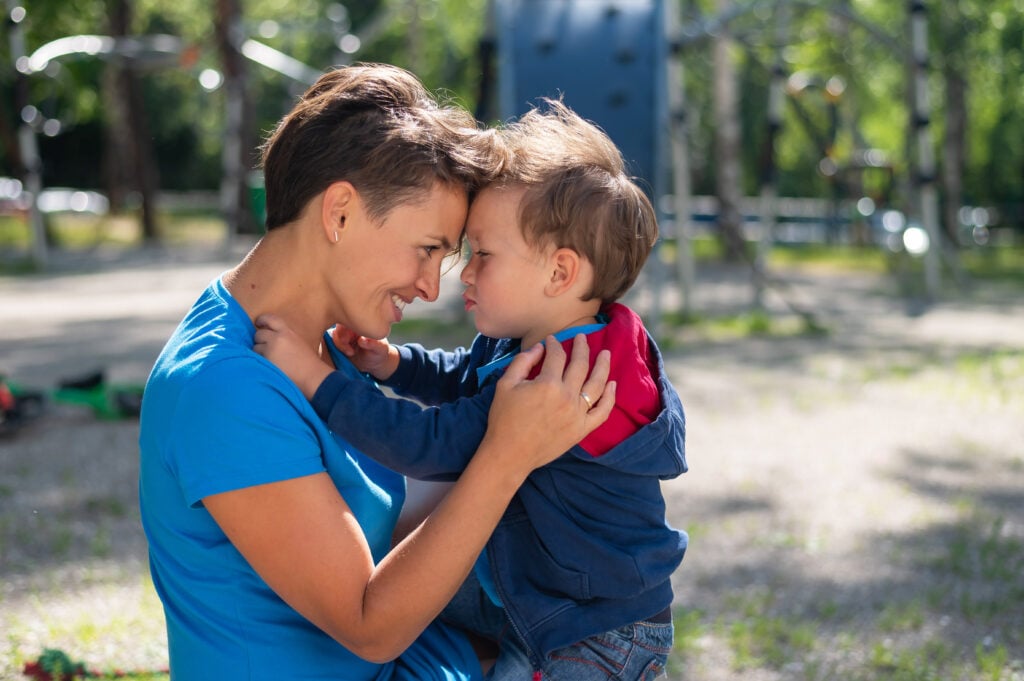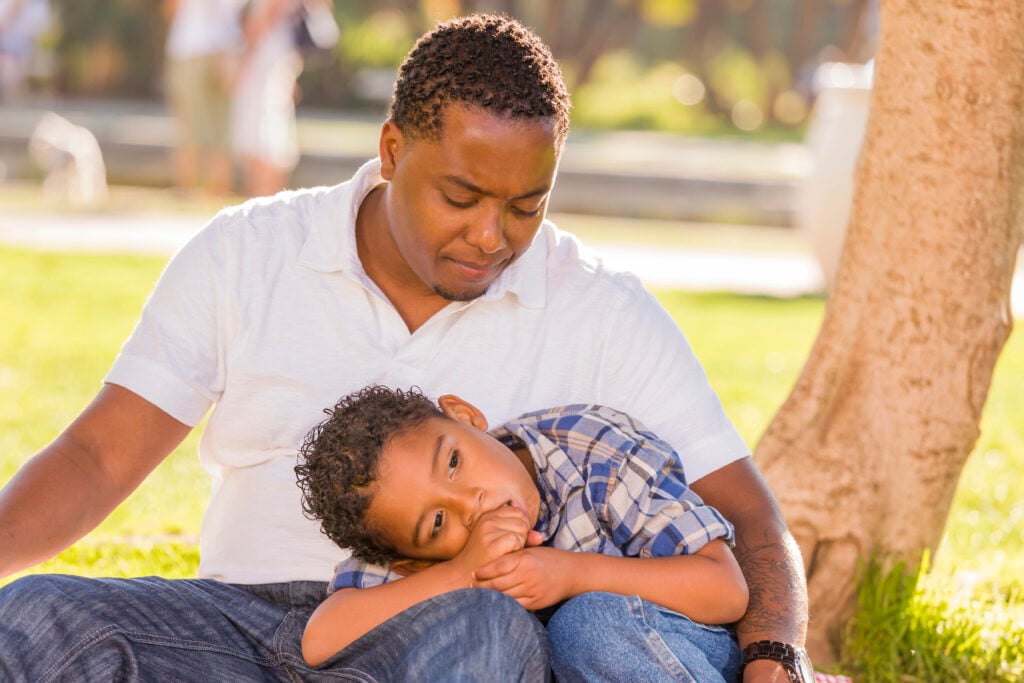
I’m the mom, and that means I’m in charge. It means that I’m supposed to make the decisions and take responsibility for the outcomes, even when I didn’t actually have control over them.
If that sounds like a familiar feeling, you’re probably also familiar with how heavy it feels, and how much self-doubt, shame, and guilt it carries. It feels like people staring and pointing while your child has a full-blown tantrum on the toy aisle, and it feels like the panic of trying to decide how to fix it.
What happens, though, if you decide that you don’t have to fix it, at least not in that moment?
The Idea Of Radical Acceptance

Humans are genetically and socially wired to think that we should fix things. If someone disparages our parenting, derides our clothing style, or dunks on our personality, the instinct is to think, “What’s wrong with me?” rather than “What’s wrong with them?” And it makes sense—we can only control one of the two people in that interaction.
When kids enter the picture, they start as almost an extension of ourselves. As they gain individuality, they’re still (to varying and gradually lessening degrees) an output of our parenting, so when they misbehave (or behave in a way we don’t feel comfortable with), we can feel guilty.
Radical acceptance is a therapeutic term that means it’s okay to accept what you can’t change. It’s the idea that you acknowledge it, allow yourself to feel the uncomfortable feelings, and say to yourself, “Okay. This is what’s going on in this moment, and I don’t have to like it, but I also don’t have to fix it right now.”
Christine Nolan of Great Lakes Therapy Center describes it as the realization that you’re not in the director’s chair, after that’s been your seat for most of your child’s life so far.
Radical Acceptance In The Context Of Toddler Troubles
So much toddler behavior is frustrating, and it’s clear that the toddler is frustrated, too.
Your child is screaming because he doesn’t like socks, and you get it —you’d also like not to be wearing socks —but it’s time to leave. You’re putting up with them, so why can’t he? Why can’t he make things easy?
Of course, logically, you know the answer. He’s little. You’ve learned to deal with things like uncomfortable socks, not getting your favorite snack, and having to stop a pleasant activity to do something you dislike. Still, he doesn’t have the experience you do, and he’s miserable right now.
Which means very little when your own nervous system is suddenly deregulated and your brain is screaming, “Fix this! Make it stop!”
The idea of radical acceptance in this situation is that you step back, and you realize you can’t snap your fingers and make this go away. Your child is uncomfortable, you are worried about being late, you are feeling anxious and panicky over his screaming, and all of that is okay, for this moment.
It’s the idea that you can’t undo this moment, or change the reality, or wave a wand and make his socks feel comfortable, but that this moment isn’t forever, and the world isn’t actually collapsing, even if it feels like it is.
Sounds Great, But How Do I Do That?

I always think the most challenging part of any idea presented in therapy is moving from idea to action. Okay, fine —radical acceptance that my kid is just upset and gets to feel his feelings —but I still need to get in the car. Can I get a verb here? What am I supposed to actually DO?
Right now? In this moment? Take a deep breath (or five) and disrupt that signal in your brain that’s screaming for you to act now. Just pause. Quick & Dirty Tips recommends a little self-talk:
Explain to yourself: “I don’t like what’s happening, but I accept that it is, in fact, happening. Instead of insisting that it shouldn’t be happening this way, I will choose to respond constructively.” Or repeat a single sentence to yourself: “I have no control over other people.” “This is a hard moment. I have survived hard things before and I can survive this.”
Then separate what you can’t do (make your child stop having those feelings, make him stop expressing them) and what you can do (distract him, offer him options, even carry him to the car if necessary, make a phone call to let someone know you’ll be late).
Then, instead of moving on from that to the “shoulds” (I should have bought socks with a different kind of seam, he should be big enough by now, etc) move on to the “cans” for future reference. Maybe you can let him pick different socks, or shoes that he can wear without socks, or maybe there’s another solution.
Whatever it is, the most important thing is to keep focused on what is possible, not on being angry at yourself or your kid for what either of you can’t do.
Communicating Radical Acceptance With Your Child
The immediate benefit of employing radical acceptance is that you address your panic and feel better, knowing that it’s okay for there to be challenging moments.
The longer-term benefit is that with practice, this becomes easier, and you’ll be able to get through this type of frustrating moment with a little less stress.
However, the really long-term benefit is that you’re also setting an example for your child. You’re showing your child that it’s possible to say, “Ugh, this thing is really frustrating me and I kind of want to explode,” and express that honestly — and then not explode.
That is a skill they can take forward and use throughout their life.

